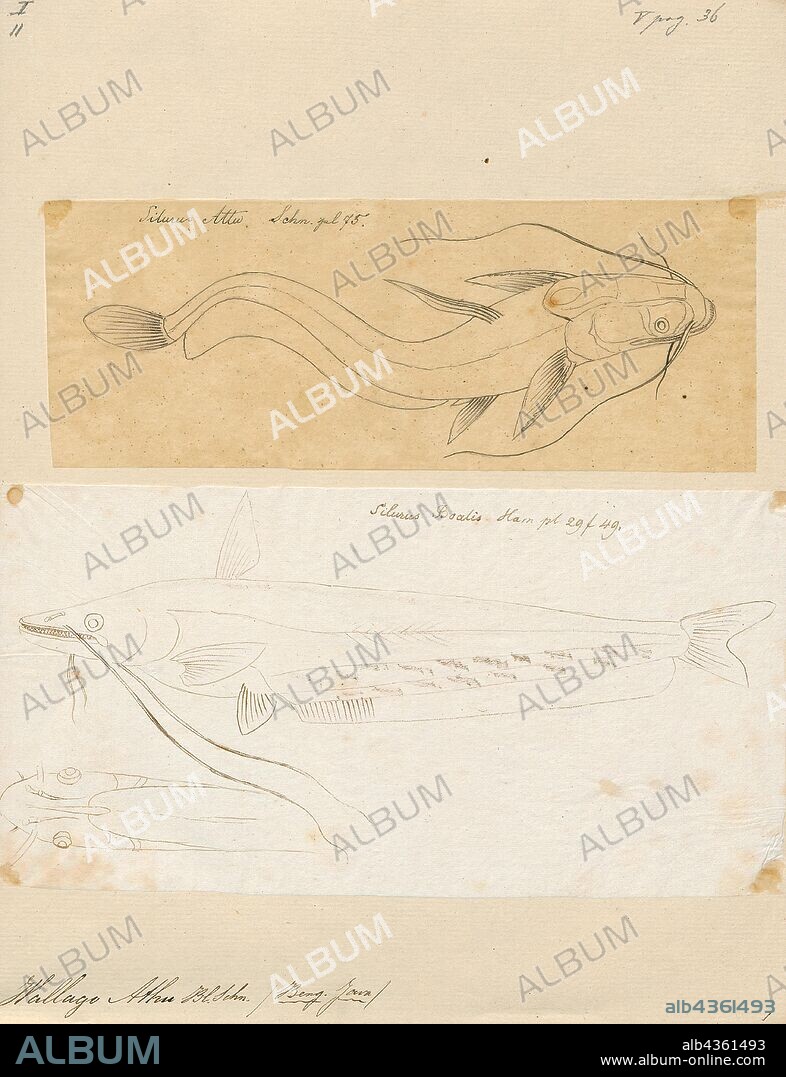alb4361493
Wallago attu, Print, Wallago attu is a freshwater catfish of the family Siluridae, native to South and Southeast Asia. It is commonly known as helicopter catfish or wallago catfish. Some regional designations, such as the Indian Sareng, the Bengal Boal, the Sylheti Gual or the Malaysian and Indonesian Tapah are also occasionally used in English. W. attu is found in large rivers and lakes in two geographically disconnected regions (disjunct distribution), with one population living over much of the Indian Subcontinent and the other in parts of Southeast Asia. The species can reach a total length of 1 m (3 ft 3 in)., 1700-1880.

|
Add to another lightbox |
|
Add to another lightbox |



Buy this image.
Select the use:

Caption:
Wallago attu, Print, Wallago attu is a freshwater catfish of the family Siluridae, native to South and Southeast Asia. It is commonly known as helicopter catfish or wallago catfish. Some regional designations, such as the Indian Sareng, the Bengal Boal, the Sylheti Gual or the Malaysian and Indonesian Tapah are also occasionally used in English. W. attu is found in large rivers and lakes in two geographically disconnected regions (disjunct distribution), with one population living over much of the Indian Subcontinent and the other in parts of Southeast Asia. The species can reach a total length of 1 m (3 ft 3 in)., 1700-1880
Credit:
Album / quintlox
Releases:
Image size:
3680 x 4794 px | 50.5 MB
Print size:
31.2 x 40.6 cm | 12.3 x 16.0 in (300 dpi)
Keywords:
1 M • 1700-1880 • 3 FT 3 • ARRIVE • ATTU • BENGAL BOAL • BRITISH • DISJUNCT DISTRIBUTION • ENGLISH • FAMILIAR • FAMILIES • FAMILY • FRESHWATER CATFISH • HELICOPTER CATFISH • INDIAN SARENG • INDIAN SUBCONTINENT • INDÍGENA • INDIGENAS • INDIGÈNE • INDIGENOUS PEOPLE • INDIGENOUS • INDONESIAN TAPAH • INGLES • LACUNA • LAKE • LAKES • LARGE RIVERS • MALAYSIAN • NATIVE • NATIVES • OCCASIONALLY • PARTS • POND • POPULATION LIVING • PRINT • REACH • REGIONAL DESIGNATIONS • SILURIDAE • SOUTH • SOUTHEAST ASIA • SPECIES • SYLHETI GUAL • TOTAL LENGTH • TWO GEOGRAPHICALLY DISCONNECTED REGIONS • W • WALLAGO ATTU • WALLAGO CATFISH
 Pinterest
Pinterest Twitter
Twitter Facebook
Facebook Copy link
Copy link Email
Email
